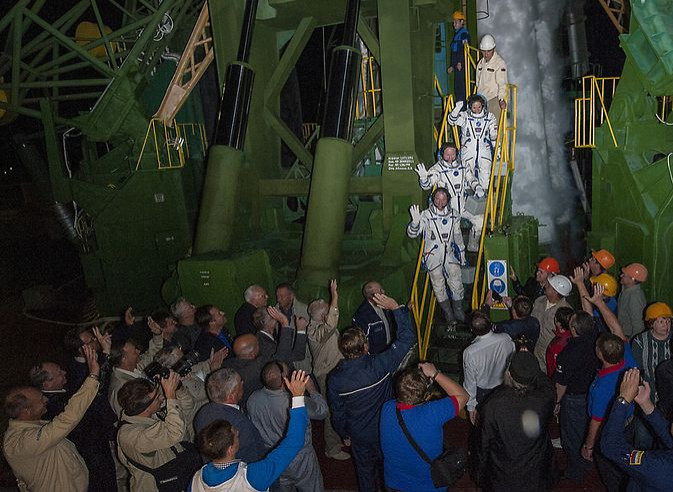Soyuz Docks To Space Station With Expedition 41 Crew That Includes First Russian Woman To ISS

Three astronauts representing the U.S. and Russia safely reached the International Space Station, or ISS, early Friday, despite a malfunction in the Russian Soyuz rocket that was carrying them to the $100 billion orbiting laboratory. The crew arrived at the ISS six hours after launching from Russia's space facility in Kazakhstan.
The Soyuz TMA-14M spacecraft docked to the ISS at 10:11 p.m. EDT, as it was orbiting 226 miles above the Earth’s surface, according to NASA. The U.S.-Russian trio on board the Soyuz rocket included America’s Barry “Butch” Wilmore of NASA, Alexander Samokutayev of Russia and his compatriot Elena Serova of the Russian Federal Space Agency, or Roscosmos, who was on her first journey to the space station.
The Soyuz TMA-14M rocket blasted off to the ISS from the Baikonur Cosmodrome in Kazakhstan, the world's first and largest operational space launch facility, at 4:25 p.m. EDT on Thursday. But shortly after the spacecraft reached its targeted orbit on its way to ISS, one of its two solar arrays had failed to deploy, Reuters reported, citing Russian media.
However, after a few hours, the Soyuz managed to dock with the space station in automatic mode and on time, the reports said, adding that the technical glitch could have extended the crew’s journey to the ISS for two more days.
The three astronauts have joined Expedition 41 Commander Max Suraev of Roscosmos, Reid Wiseman of NASA and Alexander Gerst of the European Space Agency, who have been aboard the ISS since May. Suraev, Wiseman and Gerst will return to Earth in November, with Wilmore taking over as the commander of the space station for Expedition 42.
Before returning to Earth in March 2015, the new crew members will conduct hundreds of scientific investigations and technology demonstrations, including seedling growth, observation of meteors entering Earth's atmosphere and studies of animal biology and bone and muscle physiology, according to NASA.
© Copyright IBTimes 2024. All rights reserved.






















